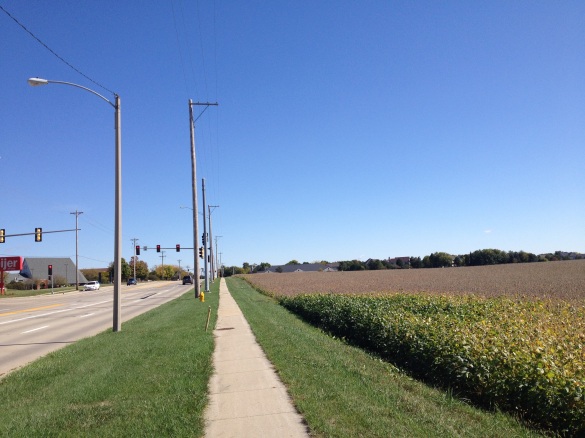Being the crazy person that I am, I drove across town the other day just to take a picture of a field (#agmajorprobs!). Anyway, what was so special about this particular field that I drove across town to take a picture? I see fields all the time, and there are several relatively close to my apartment that I could have visited.
Take a look at this picture of the soybean field. See anything out of the ordinary?
Right now, these beans are drying down and the plant should be turning from green to brown. When the field is completely brown, meaning the soybeans are mature, and the farmer decides that the plant moisture level is below a certain threshold (normally around 15%-ish), that’s when the field will be harvested.
The green patch in the picture is of soybeans that are not yet mature. Soybean plants use a biological signal based off of the length of day (days get shorter during the growing season) to know when to start the reproductive stage. This is referred to as a photoperiod, or the length of day to length of night ratio.
What’s happening here is that the street light (far left in the picture) is creating artificial daylight, and the soybeans think that we are just having some really long days. Sometimes, the plants will just get really tall and put on lots of leaves but will never flower or produce soybeans and the frost will eventually kill them.
Farmers are seeing this happen more often as towns and cities are growing and street lights go up near their fields. This is not a good thing, as they are able to produce fewer soybeans in their field. Farmers depend on the crops that they grow to feed their families, and are losing plant yields and sometimes entire fields because of urban sprawl.
We’ve talked about the affect of street lights on soybean photoperiods in class, and I thought that it was pretty cool to see this phenomenon for myself.


No Comments